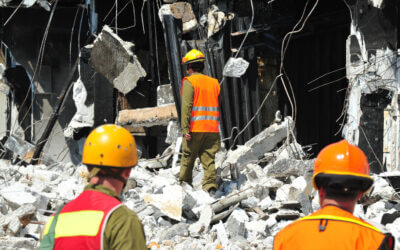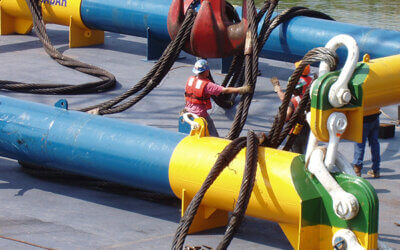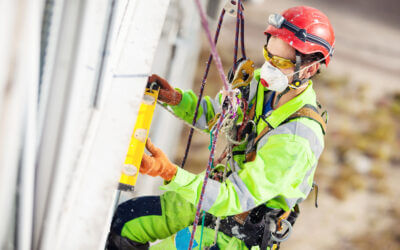There’s a basic three-step process that all OSHA fall protection guidelines adhere to: plan, provide, and train. These simple measures can help save lives and prevent dangerous falls in the workplace.
However, something as complex as workplace safety can’t really be condensed into a three-word slogan. There are several choices you will need to make within each of those three steps. And before you can plan, provide, and train, you’ll first have to determine what type of fall prevention system is best for your situation.
Read on to learn about some of the various fall protection equipment available today and the differences between them.
Fall Arrest
Fall arrest systems connect workers with a secure lanyard so that they can freely move about to perform their duties. Should a fall or slip occur from a high surface, the wire rope will catch, or “arrest,” to prevent a full fall. Fall arrest training is required by every individual employee before they can use the equipment. OSHA standards limit the arrest distance to six feet, with few exceptions.
Fall Restraint
Fall restraint systems are similar to fall arrests with one crucial difference. They provide only enough slack for workers to perform their duties without letting them reach the point of risk for a fall, usually with a 1.5m lanyard. So while fall arrest systems stop a fall once it’s in motion, restraints keep workers from falling at all.
These also require custom fitted equipment that should be properly inspected and cared for with every use. In many cases, they’re considered safer by OSHA standards than free arrest systems.
Fall Protection
More generalized fall protection systems create barriers between the worker and the fall hazard in order to greatly minimize the chance of injury. Safety nets, for example, can be used to decrease fall risk and exposure where the distance is greater than 25 feet and temporary floors or scaffolding are not in place. While these systems are generally more expensive to implement, they have a much higher safety rating, require little training for use, and need no individual equipment.
The fall protection system you choose will depend on your workplace, needs, and workers themselves. One thing is for sure, though: You can’t work without some sort of fall safety plan in place. OSHA investigators bust businesses all the time for slacking on fall protection.
Protect your business from fines and your employees from injury with proper fall arrest, restraint, or protection equipment. Every job requires its own careful risk and hazard assessment to ensure the safety of your workers.





0 Comments